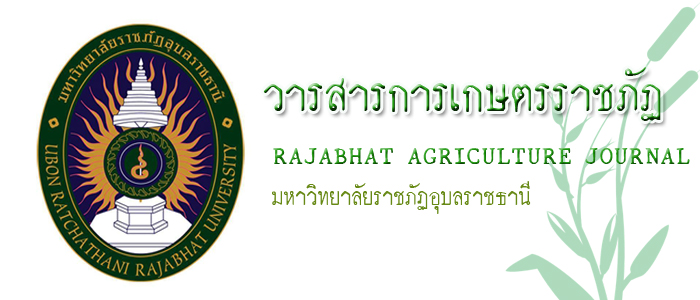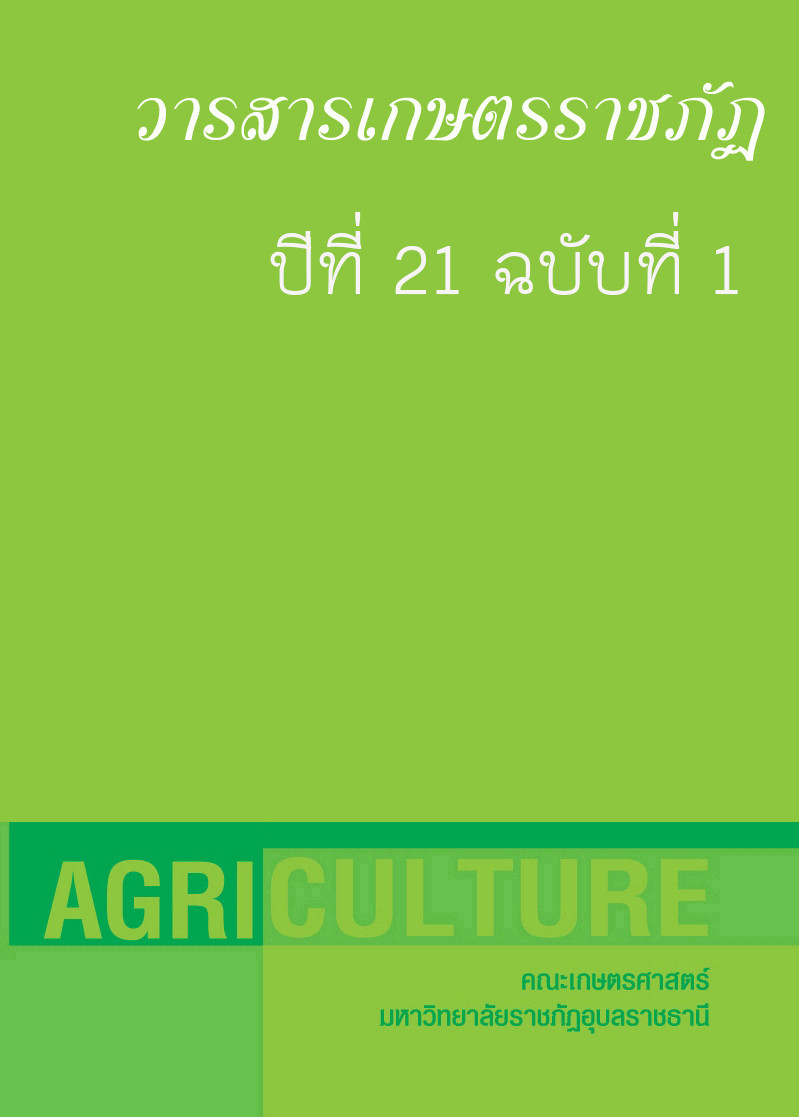
เปรียบทียบประสิทธิภาพของน้ำมันหอมระเหยจากพืชวงศ์ Piperaceae ในการควบคุมหนอนกระทู้ผัก Spodoptera litura Fabricius (Lepidoptera: Noctuidae)
เปรียบทียบประสิทธิภาพของน้ำมันหอมระเหยจากพืชวงศ์ Piperaceae ในการควบคุมหนอนกระทู้ผัก Spodoptera litura Fabricius (Lepidoptera: Noctuidae)
Comparison Efficiency of Essential oils form Piperaceae in Controlling the Common Cutworm, Spodoptera litura Fabricius (Lepidoptera: Noctuidae)
--------------------------------------------
โดย ณฐพงศ์ เมธินธรังสรรค์ และดวงเดือน วัฏฏานุรักษ์
ประเภท : บทความวิจัย
ปีที่ตีพิมพ์ : วารสารเกษตรราชภัฏ ปีที่ 17 ฉบับที่ 1
ผู้เข้าชม 0
วันที่ปรับปรุงข้อมูล : 2020-11-18 10:19:42
บทคัดย่อ
วัตถุประสงค์ของการศึกษาเพื่อเปรียบเทียบประสิทธิภาพของน้ำมันหอมระเหยจากพืชวงศ์ Piperaceae ได้แก่ พริกไทยดำ ดีปลีและใบชะพลูในการเป็นสารฆ่าและสารยับยั้งการเจริญเติบโตของหนอนกระทู้ผักวัย 3 โดยวิธีการจุ่มใบคะน้า (leaf dipping method) ที่ระดับความเข้มข้น 0.5, 1.0, 2.0, 4.0 และ 8.0 เปอร์เซ็นต์ (v/v) ทิ้งไว้ที่อุณหภูมิห้อง นำใบคะน้าลงในจานเพาะเลี้ยงเชื้อ รองก้นกล่องด้วยกระดาษฟางชุบน้ำเพื่อให้ความชื้น ปล่อยหนอนกระทู้ผักวัย 3 ที่อดอาหาร 2 ชั่วโมง จำนวน 10 ตัวต่อกล่อง ทำการทดสอบ 3 ซ้ำ วางแผนการทดลองแบบสุ่มสมบูรณ์ (CRD) ทำการทดลองที่ห้องปฏิบัติการชีววิทยาอุณหภูมิห้อง 25-27 องศาเซลเซียส ความชื้นสัมพัทธ์ 75-80 เปอร์เซ็นต์ ผลการทดลองพบว่าน้ำมันหอมระเหยจากพริกไทยดำมีประสิทธิภาพในการเป็นสารฆ่าและการยับยั้งการเจริญเติบโตของหนอนกระทู้ผักสูงสุดมีความแตกต่างกันอย่างมีนัยสำคัญที่ความเชื่อมั่น 95เปอร์เซ็นต์ เมื่อเปรียบกับสารน้ำมันหอมระเหยจากดีปลีและใบชะพลู ที่ความเข้มข้นที่ 8 เปอร์เซ็นต์ ของน้ำมันหอมระเหยจากพริกไทยดำมีประสิทธิภาพในการเป็น คำสำคัญ: น้ำมันหอมระเหย, พืชวงศ์ Piperaceae, หนอนกระทู้ผัก, Spodoptera litura
